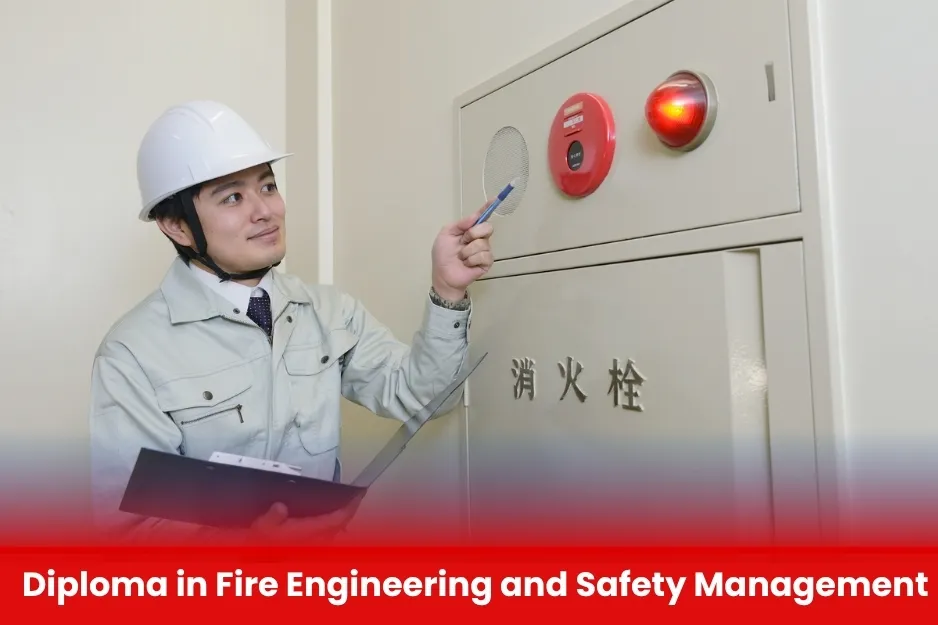Diploma in Fire Engineering and safety management
At BURAAQ UK, we are committed to developing skilled professionals who can lead with confidence in high-risk environments. Our Diploma in Fire Engineering & Safety Management is a comprehensive program designed to equip participants with the technical expertise and practical knowledge required to prevent, control, and manage fire hazards across a wide range of industries.This diploma is more than just a qualification — it is a gateway to careers in fire safety, risk management, industrial safety, and emergency response, both in the UK and internationally.

Aim of Diploma in Fire Engineering and safety management
The aim of this diploma program is to develop competent fire safety professionals with the technical knowledge and practical skills required to prevent, control, and manage fire risks across industrial, commercial, and residential sectors.
Course Overview
Diploma in Fire Engineering and safety management
Minimum Age:
- Applicants must be 18 years or older at the time of enrollment.
- Educational Background:
- Minimum qualification:
- High school / secondary school (Matric or equivalent)
- Higher qualifications (e.g., Intermediate / A-Levels / Diploma / Degree) are preferred for advanced learning.
- A background in science, engineering, or technical education is helpful but not mandatory.
| Course Code | Curriculum Title | Credit | DLH |
|---|---|---|---|
| BUK1598-1 | Fundamentals of Fire Science | 2 | 15 |
| BUK1598-2 | Fire Protection Systems | 2 | 15 |
| BUK1598-3 | Fire Prevention & Industrial Safety | 2 | 15 |
| BUK1598-4 | Fire Risk Assessment & Safety Audits | 2 | 15 |
| BUK1598-5 | Fire Safety Legislation & Standards | 2 | 15 |
| BUK1598-6 | Emergency Planning & Disaster Management | 2 | 15 |
Module 1: Fundamentals of Fire Science
- Fire triangle & tetrahedron
- Types and classes of fires
- Combustion process and fire behaviour
- Heat transfer and flame spread
Module 2: Fire Protection Systems
- Fire detection systems (smoke, heat, flame detectors)
- Fire alarm and communication systems
- Automatic sprinkler systems
- Gas-based suppression systems (CO₂, FM-200, etc.)
- Fire hydrants, hose reels, and extinguishers
Module 3: Fire Prevention & Industrial Safety
- Common causes of fire in industrial settings
- Safe handling of flammable materials
- Electrical safety and fire prevention
- Housekeeping and maintenance practices
- Behavioural safety and safety culture
Module 4: Fire Risk Assessment & Safety Audits
- Identifying fire hazards
- Risk evaluation and control measures
- Legal requirements and documentation
- Safety audit techniques and reporting
Module 5: Fire Safety Legislation & Standards
- UK Regulatory Reform (Fire Safety) Order 2005
- HSE fire safety regulations
- International standards (NFPA, BS, OSHA)
- Roles and responsibilities of employers and employees
Module 6: Emergency Planning & Disaster Management
- Emergency response and evacuation planning
- Fire drills and mock exercises
- Command and control during incidents
- Coordination with external emergency services
Module 7: Fire Safety System Design & Maintenance
- Basics of fire system design (layout, flow calculations, coverage)
- Inspection, testing, and maintenance schedules
- Troubleshooting common issues in fire protection systems
Module 8: Safety Management Systems
- Introduction to HSE and safety policies
- Safety documentation and permits
- Incident investigation and root cause analysis
- Continuous improvement and safety performance indicators
Module 9: Practical Training & Simulations
- Hands-on use of fire extinguishers
- Live demonstrations of suppression systems
- Emergency response simulations
- Site visits or virtual tours of industrial fire systems (if applicable)
- Fresh students (with Matric/High School, Intermediate, or higher) seeking careers in:
- Working professionals
- Engineers and technical staff
- All Modules within this qualification are assessed internally by the approved training Centre and externally verified by BURRAQ UK. The program uses a criterion-referenced assessment approach to ensure that learners successfully meet all required learning outcomes.
- A Pass in any unit is granted only when the learner submits valid, reliable, and authentic evidence that demonstrates achievement of the assessment criteria. The Assessor is responsible for reviewing this evidence and confirming that the learner has attained the expected standard.
